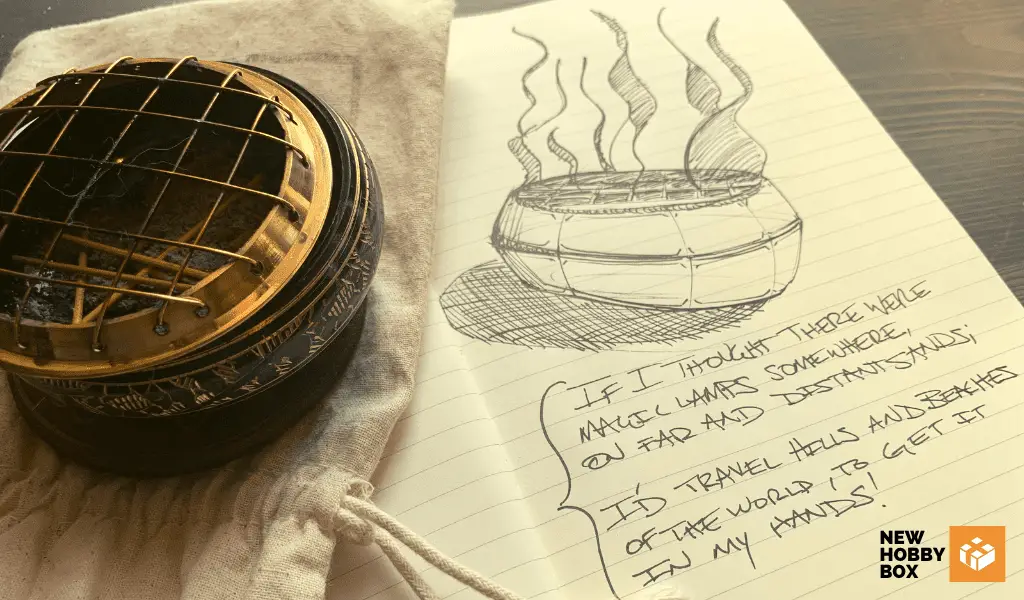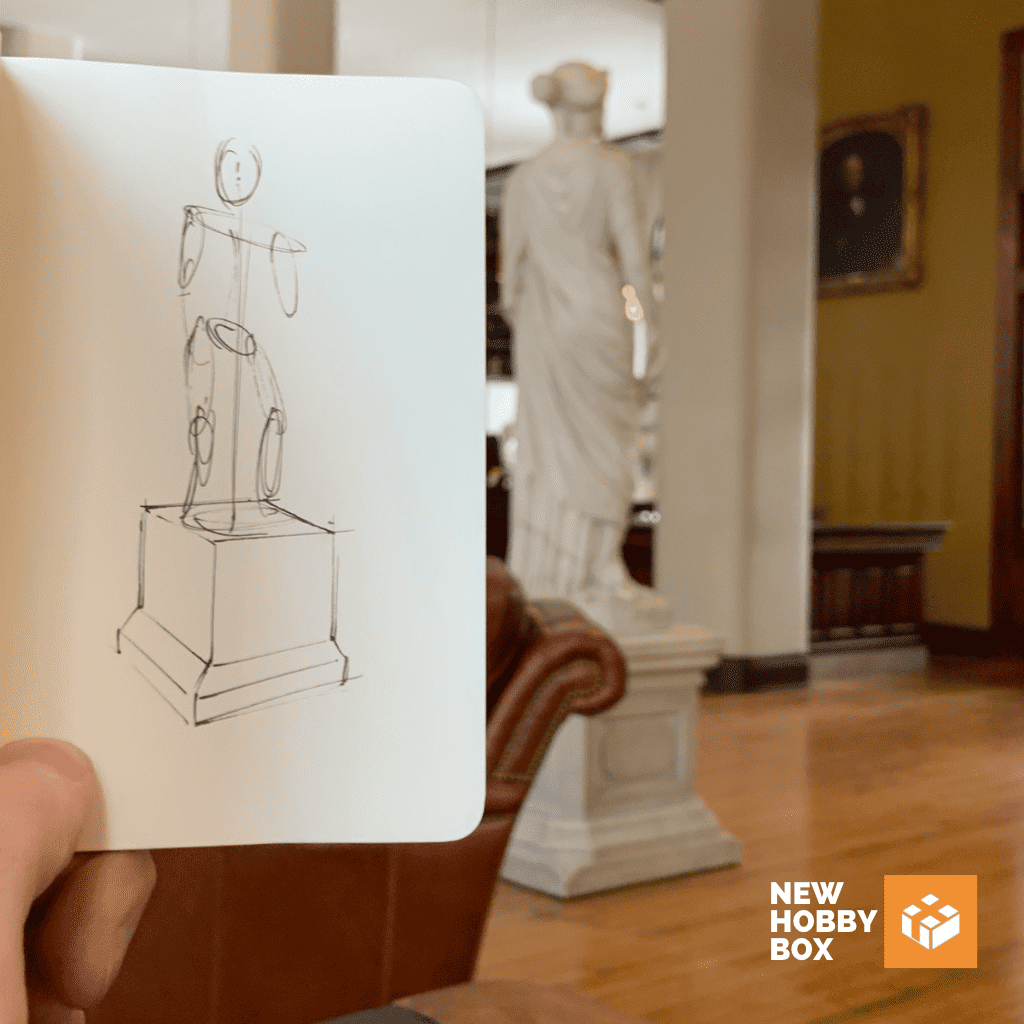
TABLE OF CONTENTS
- Basic Shapes and Proportions
- Lines and Contouring
- Understanding Light and Shadow
- Perspective Drawing
- Observation and Creativity
Ever felt the frustration of a pencil that just won’t cooperate, of lines that refuse to come alive on paper? Or maybe you’ve admired a beautiful piece of art and thought, “How in the hell did they do that?” You’re not alone, this is the human condition. Many of us have a hidden artist within, just waiting for a chance to shine. But where do you start? Start here and now by learning 5 basic skills of drawing:
- Basic Shapes and Proportions
- Lines and Contouring
- Understanding Light and Shadow
- Perspective Drawing
- Observation and Creativity
With just five basic skills and the right guidance, you could go from a doodling novice to a confident artist. Intriguing, right?
Drawing is more than just a hobby; its importance cannot be overstated. And these 5 basic drawing skills are the foundation upon which all great art is built, the first step in a journey that can transform the way you see and interact with the world.
All you need is a pencil, some paper, and a willingness to learn.
This article is your roadmap, your guide to navigating the intricate landscape of lines, shapes, and shades.
In this article, we’ll be exploring the 5 basic skills of drawing, breaking them down into simple, digestible steps. From understanding shapes and proportions to mastering light and shadow, we’ll guide you through the process, turning the seemingly complex into the beautifully simple.
So sharpen your pencils and let’s begin.

1. BASIC SHAPES AND PROPORTIONS
Before you plunge into the labyrinth of sketching, get your bearings right with the basic shapes and proportions. Think of these fundamental elements will help you deconstruct even the most complicated subjects and simplify them int something approachable.
This brings up a relevant and common question that dovetails nicely into this entire guide:
What Should You Start Drawing As a Beginner?
As a beginner, you should start drawing basic shapes, lines, and forms. These elements form the backbone of most artwork. Practice circles, squares, lines and more complex shapes. Mastery of these simple forms will aid your progress in more advanced drawing techniques.
During design school, this was a common question from friends and family. While many hope the answer is something exciting, they’re faced with the simple and honest answer of shapes and lines.
Your journey begins with the simplest of forms – circles, squares, rectangles, triangles, and ovals.
Observe their dimensions, their interplay within a composition, and how they form the backbone of more complex structures. This stage doesn’t have to be boring either. We like to combine sketching with journaling – it’s another way to capture the mood of the moment aside from words. Plus, journaling is one of the best hobbies you can take up in both your life and your career.
LOOKING FOR A SIMPLE HOBBY? YOU MIGHT ALSO LIKE: 10 EASY HOBBIES FOR BEGINNERS
You don’t have to spend years on this part to keep progressing, but this should absolutely be your first step. Why? This is where accuracy and visual appeal are built.
Unlock Your Drawing Potential: Learn the Core Skills for Beginner Artists
Subscribe to our newsletter for valuable tips, tutorials, and inspiration straight to your inbox!
Start Now Learn MoreTo hone your skills, immerse yourself in practical exercises that revolve around observing and replicating shapes.
Grab a sketchbook and challenge yourself to recreate various objects using these basic shapes.
As you progress, experiment with combining shapes to form more complex subjects.
In the grand scheme of things, mastering the art of drawing is akin to learning a new language. It’s about understanding the alphabet before you can form words, and knowing the words before you can weave stories.
It requires dedication, patience, and many bottles of wine, but progress is absolutely within reach. If you can stay persistent, you’ll experience this for yourself.
2. LINES AND CONTOURING
Lines, they’re the unsung heroes of the art world, the silent architects that shape our visual narratives. Whether it’s the rigid discipline of straight lines, the playful dance of curves, or the rebellious streak of zigzags and waves, each line type has its unique role in the grand composition.
As you practice, pay close attention to their lengths, angles, and the stories they tell.
Contouring is the magic trick of drawing. It brings paper and pencil to life. It’s about outlining the edges, defining the shape, and creating a sense of depth.
By playing with the thickness and darkness of your lines, you can highlight different elements, create emphasis, and add drama to your work.
3. UNDERSTANDING LIGHT AND SHADOW
For realistic drawing, mastering light and shadow is as crucial as a chef mastering the balance of flavors.
The key lies in the interplay between light and objects; the ability to nail it instantly breathes life into a drawing, creating an immersive sense of depth.
Start by understanding the concept of the light source and how it affects the objects within a composition, much like how the sun and moon cast their glow on the world.
Typically, where any part of an object that makes contact with another (think of a bowling ball sitting on the ground) is the darkest area. This grounds the object into position within a setting.
Keeping the culinary theme alive, when it comes to shading, think of it as the seasoning in your dish.
Consider the angle from which the light hits each object and how it casts shadows, creating a symphony of light and dark.
Experiment with different shading techniques, such as hatching and cross-hatching, (middle row in the visual above) to add volume and texture to your drawings, much like how a chef uses different techniques to bring out the best in their ingredients.
Gradually build up layers of shading to create smooth transitions and realistic forms, like a sculptor chiseling away to reveal the masterpiece within.
The more you practice integrating light and shadow, the more your drawings will exude a three-dimensional quality. Form begets perspective.
4. PERSPECTIVE DRAWING
Drawing with perspective allows you to create the illusion of depth and space, making your artwork more realistic and engaging. t’s about understanding how objects shift and warp based on their position in relation to the viewer.
For practical purposes, let’s do an exercise to show the types of perspective you can use and how to create them for any drawing:
- 1-Point Perspective: Begin with one-point perspective, where all lines converge towards a single vanishing point on the horizon. This technique is commonly used to draw roads or railway tracks, creating a sense of depth and distance.
- 2-Point Perspective: Move on to two-point perspective, where the lines converge towards two different vanishing points, suitable for drawing buildings and interiors.
- 3-Point Perspective: Finally, explore three-point perspective, which introduces a third vanishing point and is ideal for drawing complex landscapes and cityscapes.
Practice drawing ordinary objects or architectural scenes using different perspectives (any of the 3 above) to enhance your skills. Mix it up to be able to handle any sketching challenge.
This will enable you to tackle more complex projects with confidence, ultimately showcasing your artistic capability.
Unlock Your Drawing Potential: Learn the Core Skills for Beginner Artists
Subscribe to our newsletter for valuable tips, tutorials, and inspiration straight to your inbox!
5. OBSERVATION AND CREATIVITY
This last skill is easily overlooked (yes, that’s a pun) but it’s arguably the most important for mastering drawing. That is, your skill as an observer is tied to your speed of improvement.
With art, your eyes are the very tools that transform the mundane into the extraordinary. They allow you to the world through a different lens, where shapes, colors, and details take on a new significance.
Brush up on this skill and you’ll witness a massive increase in your abilityto decode the world around you.
Perhaps the simplest way to put it is this: being a skilled practioner in observation is the difference-maker between a drawing that is just accurate, and one that is accurate and authentic.
Replication is a great place to start, but it’s not final destination for an artist.
Mastering the foundations throughout this article is just another way of saying you intuitively know and comprehend the rules of drawing. This is a plateau and marks the perfect moment to start breaking the rules.
Embrace creativity and experimentation. Discover what adds your unique touch to a drawing, that personal signature that’s your fingerprint to a composition.
This means working in new styles, dabbling with new materials, trying new subject matter – the list goes on.
So long as you’re pushing your boundaries, stepping out of your comfort zone, and venturing into the unknown, then you’re moving forward as an artist.
ANYONE CAN LEARN TO DRAW
Learning to draw is an exciting journey that anyone can embark on – no matter their skill level. We truly hope you aren’t taking this as a bumper sticker slogan either. This is a sentiment gained by real experience.
Every line, every shade, every texture you create is a testament to your progress. So, keep practicing, keep exploring, and most importantly, keep drawing. Because the world is but a canvas to your imagination.

